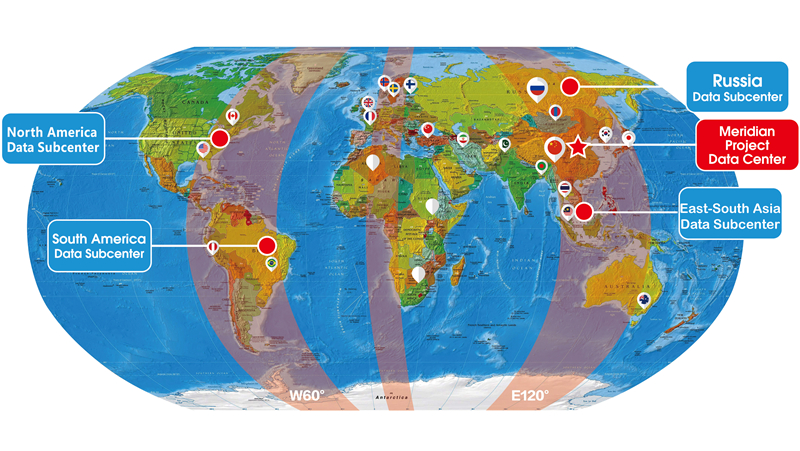The International Meridian Circle Program, based on the Chinese Meridian Project, aims to take full advantage of 5000+ instrumentation to conduct all-weather observations and study the space weather and associated system sciences along approximately a meridian circle of 120°E/60°W passing through more than 10 countries and regions. By treating the geospace, the atmosphere, as well as the cycles and spheres of the Earth surface as an integral system, the IMCP will conduct comprehensive global observations of multiple parameters to systematically study the kinetic properties of matter in the Earth system driven by solar activities and terrestrial activities, so as to reveal the relationship of space weather and global changes, and provide scientific grounding for tackling Earth disasters and informing space security decisions.
The major scientific issue studied in this program is global in nature, which demands in-depth and large-scale international cooperation in terms of scientific study and joint solutions. The Chinese Meridian Project, a mega scientific infrastructure project in China, has laid solid foundation for international cooperation. The Meridian Project is the largest and most comprehensive ground-based space weather observation network, and has received 1.5 billion Chinese yuan funding from China's National Development and Reform Commission.
The International Meridian Circle Program has received support from an array of Chinese and foreign research institutions. The current Chinese participating institutions include institutes of the Chinese Academy of Sciences, e.g. the National Space Science Center, the National Astronomical Observatories of China, the Institute of Geology and Geophysics, the Institute of Atmospheric Physics, the Institute of Tibetan Plateau Research, as well as universities and other research institutions across China, e.g. the University of Science and Technology of China, Peking University, Wuhan University, Shandong University, Harbin Institute of Technology (Shenzhen), the National Institute of Natural Hazards, the National Satellite Meteorological Center, NO. 22 Research Institute of China Electronics Technology Group Corporation.
The international participants include, the National Institute for Space Research (INPE) in Brazil, the Institute of Solar-Terrestrial Physics of Russian Academy of Sciences, Polar Geophysical Institute (PGI) in Russia, National Astronomical Research Institute of Thailand (NARIT), the French National Centre for Scientific Research (CNRS), University of Calgary in Canada, University of Leicester in UK, Umea Universitet in Sweden, Universidad Autónoma de Nuevo León in Mexico, Universitet Oslo in Norway, University of Bergen in Norway, University of Nagoya in Japan, Kyushu University in Japan, as well as the European Incoherent Scatter Radar Scientific Association (EISCAT), the Scientific Committee on Solar-Terrestrial Physics (SCOSTEP), and the Super Dual Auroral Radar Network (SuperDARN), etc.

IMCP at a glance





